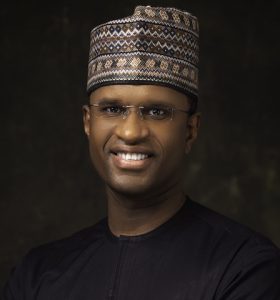Norway appears set to replace Conservative government amid oil debate, preliminary results show

The current government, headed by Prime Minister Erna Solberg, Norway’s longest-ever serving PM, has refused to put an end date on fossil fuel production, planning for its continuation beyond 2050.The election campaign period was heavily focused on climate and the country’s fossil fuel production, following the release of a damming UN climate science report and a heatwave that scorched much of the country during the summer.The initial results are not final, but in Norway, they give a fairly reliable picture of real results. Projections by the Norwegian public broadcaster NRK TV based on partial results showed that the Labor Party was on track to win some 25% of the vote, which translates to roughly 48 seats in the 169-seat parliament, suggesting a center-left alliance is likely to replace the “We have three green parties in Norway — the Socialist Party, the Liberal Party and the Green Party,” said Lars-Henrik Paarup Michelsen, the director of the Norwegian Climate Foundation..”The polls indicate that our next government will be led by the Labour party. However, Labour will need the votes of at least one green party in order to get a majority in Parliament. “Everyone’ expects that climate policy will be tightened after the election,” he added.Both the Socialists and the Green Party posted gains in the election, according to the preliminary results. The Greens were poised to secure seven seats in the parliament, a major gain from 2017 when it had just one. The Socialists appeared to be on track to get 13 seats, two more then during the last election”If this is close to the final result, it’s a sharp increase for the Greens, it’s a historic result for them and it will give them much bigger platform,” said Fay Farstad, a senior researcher at CICERO, a Norwegian institute for interdisciplinary climate research. However, Farstad added that the result is more nuanced, given the gains posted by the Center Party. “They support Norway’s climate goals and agreements, but where they differ is on the issue on CO2 tax increases, they ran on the platform of rejecting it,” she added.Norway is Europe’s largest oil producer and the world’s third-biggest natural gas exporter. Even with political will, phasing out fossil fuels is unlikely to be quick. Norwegians enjoy a high quality of life, largely because of its $1.1 trillion sovereign wealth fund — the biggest in the world — which invests revenues from the oil industry. Its While climate change itself is not up for a debate in Norway — all of the main political parties acknowledge climate change is real and already happening — the question of how to handle it is. “Climate is now one of the main fault lines in Norwegian politics … there are disagreements on what are the best policies and how urgent is it that we take action,” Sending said.”It’s less of an elephant in the room now … there’s an increased recognition that Norway is having a challenge.”Norway’s approach to the climate crisis has been paradoxical for some time. It has pledged to become carbon neutral by 2030, way ahead of many other rich countries. The US, UK and the EU are all hoping to achieve net zero by mid-century. The country is also offering generous subsidies for electric cars and investing heavily into renewable energy sources. But the oil and gas sector remains crucial for the Norwegian economy, employing 200,000 people — between 6% and 7% of its workforce — and accounting for 14% of GDP and 41% of exports.While scientists say emissions need to be halved over this decade, largely by phasing out fossil fuels, Norway has not set a date to even end the exploration of oil and gas. The Norwegian Petroleum Directorate said earlier this year that it expected oil production to keep rising in the next few years, from 1.7 million barrels a day in 2020 to just over 2 million a day in 2025.







